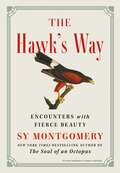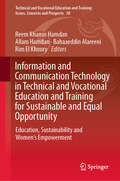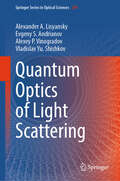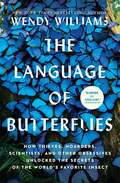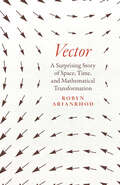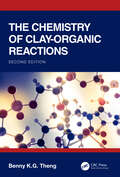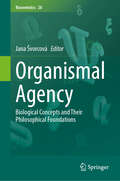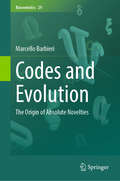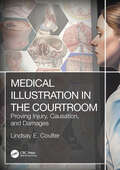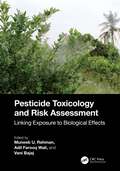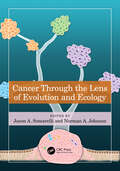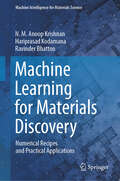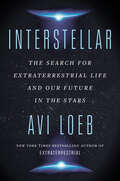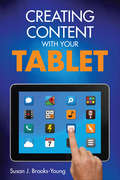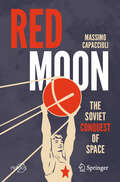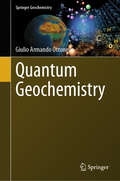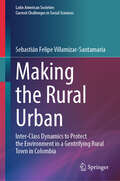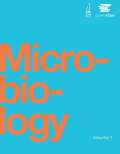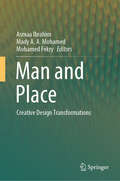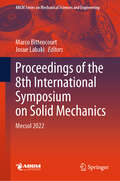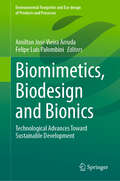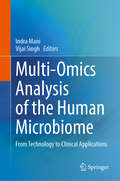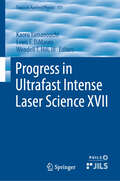- Table View
- List View
The Hawk's Way: Encounters with Fierce Beauty
by Sy MontgomeryA splendid and luminous celebration of one of nature&’s most perfect and mysterious creatures—the hawk—from the New York Times bestselling author of the &“astoundingly beautiful&” (NPR) The Soul of an Octopus. When Sy Montgomery went to spend a day at falconer Nancy Cowan&’s farm, home to a dozen magnificent birds of prey, it was the start of a deep love affair. Nancy allowed her to work with Jazz, a feisty, four-year-old, female Harris&’s hawk with a wingspan of more than four feet. Not a pet, Jazz was a fierce predator with talons that could pierce skin and bone and yet, she was willing to work with a human to hunt. From the first moment Jazz swept down from a tree and landed on Sy&’s leather gloved fist, Sy fell under the hawk&’s magnetic spell. Over the next few years, Sy spent more time with these magnificent creatures, getting to know their extraordinary abilities and instincts. They are deeply emotional animals, quick to show anger and frustration, and can hold a grudge for years. But they are also loyal and intensely aware of their surroundings. In this mesmerizing account, featuring sixteen pages of gorgeous color photographs, Sy passionately and vividly reveals the wonderous world of hawks and what they can teach us about nature, life, and love.
Information and Communication Technology in Technical and Vocational Education and Training for Sustainable and Equal Opportunity: Education, Sustainability and Women Empowerment (Technical and Vocational Education and Training: Issues, Concerns and Prospects #38)
by Allam Hamdan Bahaaeddin Alareeni Reem Khamis Hamdan Rim El KhouryThis book provide an in-depth analysis of current development concerning ICTs with reference to vocational education and training. It presents best and innovative ICT-based solutions implemented in education and explores controversial topics such as challenges and opportunities. It discusses the role of ICT, vocational education and training in women empowerment. It also examines digital learning, vocational education and sustainable operations. Information and communication technologies have created new opportunities along with new challenges, putting profound and urgent implications on vocational education and training (VET). Nowadays, we must think broadly and make the right choices about VET using innovation and digitalization to boost the quality of vocational education and training, enable the upskilling and reskilling of adults, and enhance the employability of learners. The potential and the impact of ICTs in vocational educationand training have yet to be fully exploited, leading to an emerging direction of research. This book helps readers to understand the idea of business education and education governance in a digital age. It is of interest to practitioners, administrators, researchers, teachers, teacher educators and students.
Quantum Optics of Light Scattering (Springer Series in Optical Sciences #249)
by Alexey P. Vinogradov Alexander A. Lisyansky Evgeny S. Andrianov Vladislav Yu. ShishkovThis book presents a quantum framework for understanding inelastic light scattering which is consistent with the classical descriptions of Raman phenomena and Rayleigh scattering, thus creating a unified theoretical picture of light scattering. The Raman effect was discovered in 1928 and has since proved to be one of the most powerful tools to study the molecular structure of gases, liquids, and crystals. The subsequent development of new scientific disciplines such as nonlinear optics, quantum optics, plasmonics, metamaterials, and the theory of open quantum systems has changed our views on the nature of Rayleigh and Raman scattering. Today, there are many excellent books on the theory and applications of light scattering, but a consistent description of light scattering from a unified viewpoint is missing. The authors’ approach has the power to re-derive the results of both classical and quantum approaches while also addressing many questions that are scattered acrossthe research literature: Why is Rayleigh scattering coherent while Raman scattering is not, although both phenomena are caused by the incidence of a coherent wave? Why are coherent Stokes and coherent anti-Stokes Raman scattering caused by two coherent incident waves both always coherent? This book answers these questions and more, and explains state-of-the-art experimental results with a first-principles approach that avoids phenomenological arguments. Many of the results presented are appearing in book form for the first time, making this book especially useful for young researchers entering the field. The book reviews basic concepts of quantum mechanics and quantum optics and comes equipped with problems and solutions to develop understanding of the key mathematical techniques. The rigorous approach presented in the book is elegant and readily grasped, and will therefore prove useful to both theorists and experimentalists at the graduate level and above, as well as engineers who useRaman scattering methods in their work.
The Language of Butterflies: How Thieves, Hoarders, Scientists, and Other Obsessives Unlocked the Secrets of the World's Favorite Insect
by Wendy WilliamsIn this &“deeply personal and lyrical book&” (Publishers Weekly) from the New York Times bestselling author of The Horse, Wendy Williams explores the lives of one of the world&’s most resilient creatures—the butterfly—shedding light on the role that they play in our ecosystem and in our human lives.&“[A] glorious and exuberant celebration of these biological flying machines…Williams takes us on a humorous and beautifully crafted journey&” (The Washington Post). From butterfly gardens to zoo exhibits, these &“flying flowers&” are one of the few insects we&’ve encouraged to infiltrate our lives. Yet, what has drawn us to these creatures in the first place? And what are their lives really like? In this &“entertaining look at &‘the world&’s favorite insect&’&” (Booklist, starred review), New York Times bestselling author and science journalist Wendy Williams reveals the inner lives of these delicate creatures, who are far more intelligent and tougher than we give them credit for. Monarch butterflies migrate thousands of miles each year from Canada to Mexico. Other species have learned how to fool ants into taking care of them. Butterflies&’ scales are inspiring researchers to create new life-saving medical technology. Williams takes readers to butterfly habitats across the globe and introduces us to not only various species, but &“digs deeply into the lives of both butterflies and [the] scientists&” (Science magazine) who have spent decades studying them. Coupled with years of research and knowledge gained from experts in the field, this accessible &“butterfly biography&” explores the ancient partnership between these special creatures and humans, and why they continue to fascinate us today. &“Informative, thought-provoking,&” (BookPage, starred review) and extremely profound, The Language of Butterflies is a &“fascinating book [that] will be of interest to anyone who has ever admired a butterfly, and anyone who cares about preserving these stunning creatures&” (Library Journal).
Vector: A Surprising Story of Space, Time, and Mathematical Transformation
by Robyn ArianrhodA celebration of the seemingly simple idea that allowed us to imagine the world in new dimensions—sparking both controversy and discovery. The stars of this book, vectors and tensors, are unlikely celebrities. If you ever took a physics course, the word “vector” might remind you of the mathematics needed to determine forces on an amusement park ride, a turbine, or a projectile. You might also remember that a vector is a quantity that has magnitude and (this is the key) direction. In fact, vectors are examples of tensors, which can represent even more data. It sounds simple enough—and yet, as award-winning science writer Robyn Arianrhod shows in this riveting story, the idea of a single symbol expressing more than one thing at once was millennia in the making. And without that idea, we wouldn’t have such a deep understanding of our world. Vector and tensor calculus offers an elegant language for expressing the way things behave in space and time, and Arianrhod shows how this enabled physicists and mathematicians to think in a brand-new way. These include James Clerk Maxwell when he ushered in the wireless electromagnetic age; Einstein when he predicted the curving of space-time and the existence of gravitational waves; Paul Dirac, when he created quantum field theory; and Emmy Noether, when she connected mathematical symmetry and the conservation of energy. For it turned out that it’s not just physical quantities and dimensions that vectors and tensors can represent, but other dimensions and other kinds of information, too. This is why physicists and mathematicians can speak of four-dimensional space-time and other higher-dimensional “spaces,” and why you’re likely relying on vectors or tensors whenever you use digital applications such as search engines, GPS, or your mobile phone. In exploring the evolution of vectors and tensors—and introducing the fascinating people who gave them to us—Arianrhod takes readers on an extraordinary, five-thousand-year journey through the human imagination. She shows the genius required to reimagine the world—and how a clever mathematical construct can dramatically change discovery’s direction.
The Chemistry of Clay-Organic Reactions
by Benny K.G ThengThe second edition of The Chemistry of Clay-Organic Reactions book provides a comprehensive and fully updated summary of the literature on the interactions of clay minerals with organic molecules, including reaction mechanisms and bonding modes together with their practical and industrial applications. The reader will gain an insight into the formation and properties of complexes between clay minerals and a variety of organic compounds and the use of such complexes as sorbents and carriers of organic pollutants, pesticides, dyes, and pharmaceuticals.KEY FEATURES An authoritative resource providing a detailed synthesis of published data on clay-organic complexes and reactions. Authored by a globally recognized expert in the field. Describes developments in the interactions of organic compounds with fibrous and short-range order clay minerals. This book is written for environmental and industrial chemists, organic geochemists, and soil scientists, and it will appeal to academics, researchers, industry professionals, and graduate students.
Organismal Agency: Biological Concepts and Their Philosophical Foundations (Biosemiotics #28)
by Jana ŠvorcováThis book explores the notion of organismal agency from the perspective of both philosophy and biology. The two sections of the book delve into parallel themes, including distinctions between organic and inorganic nature, self-organization, autonomy, self-presentation, memory, umwelt, and environmental influence. The philosophical part focuses on the influential thinkers who shaped our perception of living entities beyond mere mechanisms. It scrutinizes the concepts of organism and nature in the works of Aristotle, Kant, Schelling, and various processualists. Each chapter explores facets of their ideas that directly or indirectly foreshadowed or contributed to the formulation of the concept of agency. The biological part of the book investigates various concepts associated with agency such as experience, meaning attribution, and phenotypic plasticity, as well as reproduction, organisational constraints, modularity, development of integrated phenotypes, organismal choices, or self-representation through animal organisation. In essence, this work offers a comprehensive examination of organismal agency and its philosophical and biological foundations. Collaboratively authored by individuals from several institutions, this publication caters primarily to researchers and students working at the intersection of philosophy and biology.
Codes and Evolution: The Origin of Absolute Novelties (Biosemiotics #29)
by Marcello BarbieriThis text builds upon the over 1500 papers published in peer-reviewed journals revealing that there are more than 200 biological codes in living systems. The author claims this experimental fact is bound to change biology forever. This book shows how this very discovery reveals that coding is a new mechanism of life, just as the discovery of electromagnetism revealed the existence of a new physical force in the universe. The existence of many biological codes, furthermore, Barbieri argues, is one of those experimental facts that have extraordinary theoretical consequences. It implies that coding is not only a mechanism that constantly operates in all living systems, but also a mechanism of evolution, more precisely a mechanism that gave origin to the absolute novelties of the history of life. This amounts to saying that evolution took place by two distinct mechanisms, by natural selection and by natural conventions, two mechanisms that are fundamentally different because natural selection is the result of copying and deals with information whereas natural conventions are the result of coding and deal with meaning. This volume appeals to students and researchers working in the fields of semiotics, philosophy, biology and mathematics.
Medical Illustration in the Courtroom: Proving Injury, Causation, and Damages
by Lindsay E. CoulterMedical Illustration in the Courtroom: Proving Injury, Causation, and Damages educates the reader on how to communicate science visually—in personal injury, medical malpractice, criminal, and forensic cases—by creating art that utilizes medical records, radiographs, and computer software. Medical illustration bridges the gap between complex technical, medical, and scientific concepts to clearly illustrate, and explain visually, a medical condition, negligence, or the causation of an injury or death to the lay person. Medical artists are frequently challenged with illustrating injuries and medical conditions that can’t be seen by the naked eye. And while using medical photography and imaging for illustrative purposes can be helpful, to an untrained eye it can often be unclear or confusing. This is where the medical illustrator enters the equation. There are often patients who have recovered from an injury or infection that appear in good health. However, should an unforeseen injury or fatality happen, medical illustrators can reveal to people what’s actually going on inside the person, an invaluable asset to attorneys in the courtroom—especially for personal injury and medical malpractice cases. While many attorneys utilize medical artists, nonvisual people don’t always recognize the value of demonstrative aids until they see them first-hand.When attorneys and their clients enlist the aid of medical artists, it quickly becomes apparent that properly conceived and executed artwork is invaluable to illustrating the facts—and medical impacts—of any number of scenarios: homicides by shooting, stabbings, vehicular accidents, in addition to medical malpractice and personal injuries resulting from surgery or possible negligence.Presenting a myriad of services and computer technologies that can be utilized, Medical Illustration in the Courtroom provides demonstrative aids used in cases to illustrate personal injury and medical malpractice, employing "tricks of the trade" to create an accurate effective image. Such images are educational to attorneys, insurance adjusters, judges, and juries to help create a visual storyline, the goal being to help combine art and science to provide a clear illustration of events to help in adjudicate legal and forensic cases.
Pesticide Toxicology and Risk Assessment: Linking Exposure to Biological Effects
by Muneeb U. Rehman Adil Farooq Wali Vani BajajWith the emergence of new pesticide combinations and application methods, assessing their potential risks to non-target organisms and human well-being becomes paramount. Pesticide Toxicology and Risk Assessment focuses on the need and strategies for safe and efficient use of pesticides. It offers insights from toxicogenomics, enabling an understanding of the genetic and epigenetic factors influencing human susceptibility to chemical toxicity, thereby quantifying their impacts.This book underscores the significance of risk assessment methodologies considering real-time variables influencing pesticide exposure to the environment and humans. It provides comprehensive details about models designed to evaluate risks across a spectrum of scenarios, from worst-case to real-time situations, while outlining strategies to mitigate these risks proactively. Furthermore, this book delves into the critical need for conducting field studies, particularly in addressing innovative combinations and application techniques.Key Features:• Covers toxicogenomic insights, delving into genetic and epigenetic impacts on human susceptibility to chemical toxicity• Provides insight into necessary field studies for new pesticide approaches• Aids pesticide manufacturers with risk assessment and effective formulation insightsAs an aid for regulatory bodies, the book facilitates the evaluation of risks linked to both established and innovative pesticides, promoting informed decisions on usage by integrating risk reduction approaches. Simultaneously, it serves as a valuable guide for pesticide manufacturers, offering insights into using risk assessment tools to develop secure and effective pesticide blends. This guidance expedites the introduction of novel pesticides that are efficient and safe for various applications.
Cancer through the Lens of Evolution and Ecology
by Norman A. Johnson Jason A. SomarelliCancer cells exist in an ever-changing “ecology” and are subject to evolutionary pressures just like any species in nature. This edited book explores the following themes: 1) how the dynamics of mutation, epigenetics, and gene expression noise are sources of genetic diversity; 2) how scarce resources influence cancer therapy resistance; 3) how predator-prey dynamics are mirrored in immune-cancer cross-talk; 4) how cancer cells parallel niche construction theory; 5) how changing fitness landscapes enable cancer growth; and 6) how cancer cells interact within the body. The book is a resource for understanding cancer as a disease of multicellularity grounded in evolutionary principles. By using this knowledge, researchers are starting to exploit these behaviors for treatment paradigms.Key Features Bridges disciplines exemplifying the ways disparate fields create new perspectives when integrated. Offers insights from leading scholars in cancer biology, ecology and evolutionary biology. Provides a timely recognition by oncologists that evolutionary paradigms are crucial for breakthroughs in cancer treatment. Integrates basic and applied sciences of oncology and evolutionary biology.
Machine Learning for Materials Discovery: Numerical Recipes and Practical Applications (Machine Intelligence for Materials Science)
by Hariprasad Kodamana Ravinder Bhattoo N. M. KrishnanFocusing on the fundamentals of machine learning, this book covers broad areas of data-driven modeling, ranging from simple regression to advanced machine learning and optimization methods for applications in materials modeling and discovery. The book explains complex mathematical concepts in a lucid manner to ensure that readers from different materials domains are able to use these techniques successfully. A unique feature of this book is its hands-on aspect—each method presented herein is accompanied by a code that implements the method in open-source platforms such as Python. This book is thus aimed at graduate students, researchers, and engineers to enable the use of data-driven methods for understanding and accelerating the discovery of novel materials.
Interstellar: The Search for Extraterrestrial Life and Our Future in the Stars
by Avi Loeb“The world's leading alien hunter” — New York Times MagazineFrom acclaimed Harvard astrophysicist and bestselling author of Extraterrestrial comes a mind-expanding new book explaining why becoming an interstellar species is imperative for humanity’s survival and detailing a game plan for how we can settle among the stars.In the New York Times bestseller Extraterrestrial, Avi Loeb, the longest serving Chair of Harvard’s Astronomy Department, presented a theory that shook the scientific community: our solar system, Loeb claimed, had likely been visited by a piece of advanced alien technology from a distant star. This provocative and persuasive argument opened millions of minds internationally to the vast possibilities of our universe and the existence of intelligent life beyond Earth. But a crucial question remained: now that we are aware of the existence of extraterrestrial life, what do we do next? How do we prepare ourselves for interaction with interstellar extraterrestrial civilization? How can our species become interstellar?Now Loeb tackles these questions in a revelatory, powerful call to arms that reimagines the idea of contact with extraterrestrial civilizations. Dismantling our science-fiction fueled visions of a human and alien life encounter, Interstellar provides a realistic and practical blueprint for how such an interaction might actually occur, resetting our cultural understanding and expectation of what it means to identify an extraterrestrial object. From awe-inspiring searches for extraterrestrial technology, to the heated debate of the existence of Unidentified Aerial Phenomena, Loeb provides a thrilling, front-row view of the monumental progress in science and technology currently preparing us for contact. He also lays out the profound implications of becoming—or not becoming—interstellar; in an urgent, eloquent appeal for more proactive engagement with the world beyond ours, he powerfully contends why we must seek out other life forms, and in the process, choose who and what we are within the universe.Combining cutting edge science, physics, and philosophy, Interstellar revolutionizes the approach to our search for extraterrestrial life and our preparation for its discovery. In this eye-opening, necessary look at our future, Avi Loeb artfully and expertly raises some of the most important questions facing us as humans, and proves, once again, that scientific curiosity is the key to our survival.
Vigyan class 10 - Himachal Pradesh Board: विज्ञान कक्षा १० - हिमाचल प्रदेश बोर्ड
by Himachal Pradesh Board of School Education - Dharamshalaहिमाचल प्रदेश स्कूल शिक्षा बोर्ड, धर्मशाला द्वारा प्रकाशित कक्षा 10 के लिए "विज्ञान" का डिजिटल संस्करण, 2013 से 2022 तक की विभिन्न संस्करणों और पुनर्मुद्रितियों को शामिल करता है। इसका सारांश पाठ्यक्रम और शिक्षण प्रक्रिया के माध्यम से शिक्षकों और छात्रों के बीच एक सेतु के रूप में काम करता है। यह मूल्यांकन, संबोधन, और अच्छी तरह से प्रस्तुत सामग्री की महत्वता पर जोर देता है। रासायनिक अभिक्रियाएँ एवं समीकरण, अम्ल, क्षारक एवं लवण, धातु एवं अधातु, कार्बन एवं उसके यौगिक, तत्वों का आवर्त वर्गीकरण, जैव प्रक्रम, नियंत्रण एवं समन्वय, जीव जनन कैसे करते हैं, आनुवंशिकता एवं जैव विकास, प्रकाश-परावर्तन तथा अपवर्तन, मानव नेत्र तथा रंगबिरंगा संसार, विद्युत, विद्युत धारा के चुंबकीय प्रभाव, ऊर्जा के स्रोत, हमारा पर्यावरण और प्राकृतिक संसाधनों का संपोषित प्रबंधन। इसमें मानक पाठ्यक्रम के विषय शामिल हैं जैसे रासायनिक प्रतिक्रियाएं और समीकरण, धातु और अधातु, अम्ल, क्षार और लवण, कार्बन, आवर्त सारणी, जीवन प्रक्रियाएं, प्रजनन, आनुवंशिकता, प्रकाश, बिजली, मानव आंख, ऊर्जा, चुंबकत्व, पर्यावरण और संसाधन प्रबंधन। सीखने को आसान बनाने के लिए, किताबें चित्रों से सुसज्जित हैं जो छात्रों को स्पष्ट विचार बताती हैं। इसी तरह, पुस्तक में दिए गए उदाहरण अच्छी तरह से वर्णित हैं और उत्पन्न होने वाले किसी भी भ्रम को दूर करने में मदद करते हैं। यह पुस्तक हल किए गए और अनसुलझे प्रश्नों के साथ भी आती है ताकि छात्र स्वयं का परीक्षण कर सकें और अपने कौशल में सुधार कर सकें।
Creating Content With Your Tablet
by Susan J. Brooks-YoungTransform students from content consumers to content creators! This comprehensive guide gets to the heart of effective mobile technology use in today’s classroom. Internationally recognized education expert Susan Brooks-Young provides manageable, research-based strategies to help teachers and administrators: Confidently plan and manage mobile technology activities across grade levels Explore new uses and applications for multiple devices Use rubrics and checklists to evaluate appropriate, cross-platform educational apps Manage content-specific tablet use in learning centers or small groups Tap student ingenuity and improve critical thinking skills Time-saving tips cover a wide range of apps to help busy teachers easily incorporate tablets into daily classroom use. Includes step-by-step instructions across content areas for digital photography, video, ePublishing, QR codes and more. Transform students from content consumers to content creators with this must-have resource! "Creating Content With Your Tablet provides educators with simple, easy steps to implement tablet technology with the Common Core Standards. I am encouraged to try the apps in this book. It makes the connection between modern technology and what teachers are already doing in the classroom seem seamless." —Michelle Strom, Language Arts Teacher Fort Riley Middle School, KS "Very practical. The discussion questions at the end of each chapter are excellent for a book study or district that is moving towards tablet implementation." —David Fife, Vice Principal Tweedsmuir Public School, London, Ontario, Canada
Creating Content With Your Tablet
by Susan J. Brooks-YoungTransform students from content consumers to content creators! This comprehensive guide gets to the heart of effective mobile technology use in today’s classroom. Internationally recognized education expert Susan Brooks-Young provides manageable, research-based strategies to help teachers and administrators: Confidently plan and manage mobile technology activities across grade levels Explore new uses and applications for multiple devices Use rubrics and checklists to evaluate appropriate, cross-platform educational apps Manage content-specific tablet use in learning centers or small groups Tap student ingenuity and improve critical thinking skills Time-saving tips cover a wide range of apps to help busy teachers easily incorporate tablets into daily classroom use. Includes step-by-step instructions across content areas for digital photography, video, ePublishing, QR codes and more. Transform students from content consumers to content creators with this must-have resource! "Creating Content With Your Tablet provides educators with simple, easy steps to implement tablet technology with the Common Core Standards. I am encouraged to try the apps in this book. It makes the connection between modern technology and what teachers are already doing in the classroom seem seamless." —Michelle Strom, Language Arts Teacher Fort Riley Middle School, KS "Very practical. The discussion questions at the end of each chapter are excellent for a book study or district that is moving towards tablet implementation." —David Fife, Vice Principal Tweedsmuir Public School, London, Ontario, Canada
Red Moon: The Soviet Conquest of Space (Springer Praxis Books)
by Massimo CapaccioliThe book is about the “space race”, starting from the earliest steps of astronautics to the Moon landings of Armstrong and Aldrin. The conquest of space began as a by-product of an exquisitely military project, the rapid, and efficient delivery of explosives, conventional and then nuclear, over great distances into enemy territory. It happened at the turn of World War II, first with the V2s, the Wunderwaffen that von Braun had created for his Führer, and, after the surrender of Germany and Japan, with the intercontinental ballistic missiles that the Russians and Americans built to serve as cabs for atomic bombs. Restrained by the fear of nuclear holocaust, the two great powers that had momentarily divided the government of the world turned the risky muscular confrontation into an unusual race to climb the sky: a stage race with a conventional finish line marked by the human landing on the Moon. Under the constant guidance of Sergei Korolev, the mysterious “chief designer”, the Soviets got off to a surprise start and stayed in the lead until almost the end, with the Sputniks, the orbital flights of Gagarin and Tereshkova, the first spacewalk, and the unmanned soft landings on the Moon and Venus, only to be caught up and overtaken by the Americans at the very edge. An adventure that lasted a total of twelve years, marked by brilliant and courageous men, by astute and far-sighted politicians, by patriotism and ambition, and, as always, regulated by luck, which profoundly affected our world and the design of its future.
Quantum Geochemistry (Springer Geochemistry)
by Giulio Armando OttonelloThis book summarizes recent impressive improvements in the application of Quantum Mechanics, coupled with the significant increase in both speed and storage capabilities of modern computers, that allow to depict the energy and reactive properties of chemically complex materials through first principles and destroy the dogmatic assumption that the natural complexity cannot be modeled. It presents methods of Quantum Chemistry applied to various fields of geoscience. The book aims to convey to the audience, methods and procedures apt to obtain sound thermodynamic and thermo-physical data for earth’s materials under various aggregation states. The attention of this book focusses on the applicative aspects of the various procedures, with reference to the underlying theory.
Making the Rural Urban: Inter-Class Dynamics to Protect the Environment in a Gentrifying Rural Town in Colombia (Latin American Societies)
by Sebastián Felipe Villamizar-SantamaríaThis book takes the small rural town of La Calera, in the outskirts of the Colombian capital of Bogotá, as a case study to analyze how residents from different social classes – wealthier ex-urban newcomers arriving to traditionally peasant and rural areas – interact to decide how nature will be used in the face of further urban expansion. Contrary to the conflicts in other gentrification cases, including those of “green” gentrification, this book shows how newcomers and longtimers in La Calera use environmental concerns to bridge social class rifts and push the state to provide water, public space, and decision-making power. Residents see abundant ecological resources like water and land around them, but they do not have access to aqueducts, green public space or power over planning decisions affecting the distribution of these resources. As a response, and to challenge the state more effectively, newcomers and longtimers create inter-class alliances through what the author calls third nature: the way residents try to both protect and keep using existing ecological goods. To do so, despite high levels of class inequality, residents had a similar goal of protecting ecological resources around them by intervening in the physical and political landscapes against a state that induces scarcity, selectively enforcing environmental policies to the detriment of Calerunos. As cities all around the Global South continue to grow, urban expansion posits a threat to the environment by transforming agricultural and protected areas into denser residential or touristic spaces. Moreover, as natural resources become scarcer in the face of climate change, inequality might further existing environmental privileges and vulnerabilities. By examining closely how Calerunos bridge class inequalities for environmental reasons, this case highlights processes that inform other gentrifying rural spaces around the world.
Microbiology
by Nina Parker Mark Schneegurt Anh-Hue Thi Tu Brian M. Forster Philip ListerMicrobiology covers the scope and sequence requirements for a single semester microbiology course for non majors. The book presents the core concepts of microbiology with a focus on applications for careers in allied health. The pedagogical features of the text make the material interesting and accessible while maintaining the career application focus and scientific rigor inherent in the subject matter. The Microbiology artwork enhances students understanding of concepts through clear and effective illustrations, diagrams, and photographs. Microbiology is produced through a collaborative publishing agreement between OpenStax and the American Society for Microbiology Press. The book aligns with the curriculum guidelines of the American Society for Microbiology.
Man and Place: Creative Design Transformations
by Asmaa Ibrahim Mohamed Fekry Mady A. A. MohamedThis book is a result of the 1st ARCH and DESN International Conference (previously Memaryat) Conference held at Effat university on the 8th and 9th of February 2023, and includes chapters dealing with the critical manifestation of “Man and Place” to accommodate and embrace social, economic, and environmental needs within a balanced, integrated system.The book is groundbreaking in that it brings together some of the brightest minds in academia and industry. The book includes a diverse range of contributions from esteemed academics and practitioners and offers a unique platform for thought-provoking discussions and innovative strategies that will help shape the cities of tomorrow.Further chapters include topics such as sustainability and creative transformations, smart cities, environmental resilience, resilient local economies, manufacturing innovations, and smart products. This book will be of interest to decision-makers, architects, interior designers, product designers, urban planners, urban designers, entrepreneurs, educators, and agencies.
Proceedings of the 8th International Symposium on Solid Mechanics: Mecsol 2022 (Lecture Notes in Mechanical Engineering)
by Marco Bittencourt Josue LabakiThis book presents the proceedings of Mecsol 2022. The papers cover multidisciplinary topics, including Fatigue and Failure Analyses; Composite Materials and Structures; Elasticity, Plasticity, Damage and Fracture Mechanics; Viscoelasticity and Viscoplasticity; Impact Engineering; Structural Reliability Methods and Reliability-Based Design Optimization; Optimization of Materials, Fluids and Structures; Numerical Methods; Nonlinear Analyses; High-Performance Computing applied to Solid Mechanics; and Artificial Intelligence- and Neural Network-supported applications.
Biomimetics, Biodesign and Bionics: Technological Advances Toward Sustainable Development (Environmental Footprints and Eco-design of Products and Processes)
by Felipe Luis Palombini Amilton José Vieira ArrudaNature is a vast source of inspiration and information for the resolution of complex problems and can influence many varieties of design. Biomimetics, biodesign and bionics are three branches of interdisciplinary research merging biological and applied sciences. This volume collects cases that highlight recent breakthroughs in these disciplines. Biological features such as patterns, shapes, mechanisms, colors, structures, and more can be analyzed, organized, and modeled for application in human creations. Therefore, design, engineering, and architecture projects can benefit from solutions that were already tested and verified through evolution in the natural world. With the development of new technologies for the investigation, simulation, and testing of natural features, the path from nature to product can be accelerated. The cases presented in this work showcase how technological advancements are leading to improved design solutions and influencing our very comprehension of natureand its complex organization.
Multi-Omics Analysis of the Human Microbiome: From Technology to Clinical Applications
by Vijai Singh Indra ManiThis book introduces the rapidly evolving field of multi-omics in understanding the human microbiome. The book focuses on the technology used to generate multi-omics data, including advances in next-generation sequencing and other high-throughput methods. It also covers the application of artificial intelligence and machine learning algorithms to the analysis of multi-omics data, providing readers with an overview of the powerful computational tools that are driving innovation in this field. The chapter also explores the various bioinformatics databases and tools available for the analysis of multi-omics data. The book also delves into the application of multi-omics technology to the study of microbial diversity, including metagenomics, metatranscriptomics, and metaproteomics. The book also explores the use of these techniques to identify and characterize microbial communities in different environments, from the gut and oral microbiome to the skin microbiome and beyond. Towards theend, it focuses on the use of multi-omics in the study of microbial consortia, including mycology and the viral microbiome. The book also explores the potential of multi-omics to identify genes of biotechnological importance, providing readers with an understanding of the role that this technology could play in advancing biotech research. Finally, the book concludes with a discussion of the clinical applications of multi-omics technology, including its potential to identify disease biomarkers and develop personalized medicine approaches. Overall, this book provides readers with a comprehensive overview of this exciting field, highlighting the potential for multi-omics to transform our understanding of the microbial world.
Progress in Ultrafast Intense Laser Science XVII (Topics in Applied Physics #151)
by Kaoru Yamanouchi Wendell T. Hill III Louis F. DiMauroThis book covers a broad range of interdisciplinary topics, focusing on atoms and molecules in intense laser fields, excitation processes in intense laser fields, photonics and materials, high-order harmonics generation, XFEL, high-power lasers and their applications, and quantum computing. This seventeenth volume features contributions from world-renowned researchers on topics such as applications of attosecond and femtosecond laser pulses, coherence and dynamics in quantum systems, and applications of super-intense laser fields.The PUILS series delivers up-to-date reviews of progress in this emerging interdisciplinary research field, spanning atomic and molecular physics, molecular science, and optical science, which has been stimulated by the recent developments in ultrafast laser technologies. Each volume compiles peer-reviewed articles authored by researchers at the forefront of each of their own subfields of ultrafast intense laser science. Every chapter opens with an overview of the topics to be discussed, so that researchers unfamiliar with the subfield, especially graduate students, can grasp the importance and attractions of the research topic at hand; these are followed by reports of cutting-edge discoveries.
